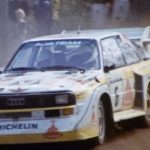
The VW Country Buggy, The Australian Meyers Manx
What happens when different places evolve a product to do the same job? In the U.S they came up with the Meyers Manx. Europe produced type 181 (The Thing) and Australia produced the country Buggy.
It seems obvious that that this would happen as the Beetle only needs a limited amount of modification to become an off road vehicle.
But for all of this to happen independently at around the same time shows that whilst the idea is the same the results can be a little different. Though under the skin there are similarities due to the base vehicle.
I guess you could say this is the best example of convergent evolution in automotive terms. Helped in part by the fact the VW Beetle was produced everywhere, largely in CKD kit form.
The Country Buggy was initially conceived as a military vehicle and was designed and engineered in Australia using Type 1 and Type 2 Volkswagen components. It was designed with short overhangs to help with approaching slopes and raised ground clearance. Portal axles from the type 2 bus took the power from the standard Beetle flat four engine to the rear wheels.
Being a utilitarian vehicle, it has no doors and high sills with vinyl side screens, or curtains. The only complex part of the flat stamped steel body is the folding windscreen. Beetle headlamps placed on the flat angled panel on the front.
It was planned to have the Country Buggy ready earlier in the 1960s, but it was 1968 by the time the first cars left the factory. The final model wasn’t suitable for military use and the Type 181 becoming available globally meant that the Country Buggy found few customers. After only 1952 vehicles were built the Country Buggy ended production in Australia.
But it lived on in the Philippines. The Type 181 chassis was sold with locally built Country Buggy bodies. In 1972 Volkswagen made investments with local firms to produce a slightly modified Country Buggy bodies called Sakbayan. In Filipino it means peoples car and they produced it for several years.
They are rare today and have their own following and have become collectible. One day I hope to see one.















